This site is part of various affiliate programs. Links may give us a small compensation for any purchases you make, at no additional cost to you. Please read the disclaimer policy for full details.
I recently had the opportunity to test the Canon Pro 200 vs Pro 300 side-by-side, to see which is really the best photo printer for hobbyists and professionals.
I know that there’s a lot of confusion over the real-world differences between these two printers.
Does the pigment vs dye ink difference matter?
Do 8 print cartridges produce a noticeably worse image than 10?
Is the Pro-300 worth the extra money?
I’m going to cover the results of my tests in this article, so that you can see precisely where the differences lie, and so you don’t waste your money on getting the wrong printer for you.
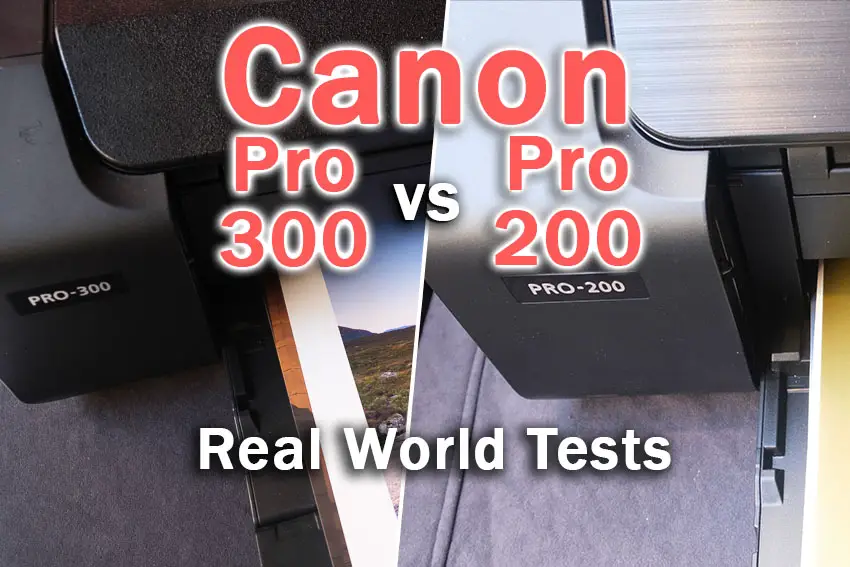
Canon Pro 200 vs Pro 300: Quick Overview
My Top Pick
Ideal Consumer Photo Printer
 Vibrant sharp prints
Vibrant sharp prints Prints colorful, glossy images best
Prints colorful, glossy images best Low ink cost per sheet
Low ink cost per sheet A3 borderless printing
A3 borderless printing Up to 13 inch wide prints
Up to 13 inch wide prints Dye-based inks are less good for B&W
Dye-based inks are less good for B&W
Best Pro Photo Printer
 Unrivalled print quality
Unrivalled print quality Perfect for B&W prints
Perfect for B&W prints Pigment inks for archival quality
Pigment inks for archival quality 9 inks plus chroma optimizer
9 inks plus chroma optimizer 13 inch wide prints and borderless A3 printing
13 inch wide prints and borderless A3 printing Higher cost per print
Higher cost per print
For color printing at home, choose the Canon Pro 200.
For all black and white printing, choose the Canon Pro 300.
For professional color printing and archival prints, choose the Canon Pro 300.
Canon Pixma Pro 200 vs Pro 300: Detailed Comparison
I’ll take a look at all of the differences of the Canon Pro 200 and 300 we actually care about below – I won’t cover all of the technical details for each printer because a lot of it is just marketing.
Printing Quality
In terms of outright printing quality, the Canon Pro 200 and 300 are very similar.
The differences only become apparent depending on the types of photo paper that you use, with the Canon Pro 200 generally suited to glossy or lustre photo paper, and the Canon Pro 300 suited more to matte photo papers.
The Canon Pro 300 gives slightly deeper colors, particularly in blues and greens, and the separation of black into matte black and photo black makes the Pro 300 unbeatable for black and white work.
Color Print Quality
Color prints from the Canon Pro 300 have a slightly deeper range of colors in blues and greens in particular, thanks to the pigment inks, but there’s no major noticeable difference in practice.
Canon Pro 200 Color Print Examples:
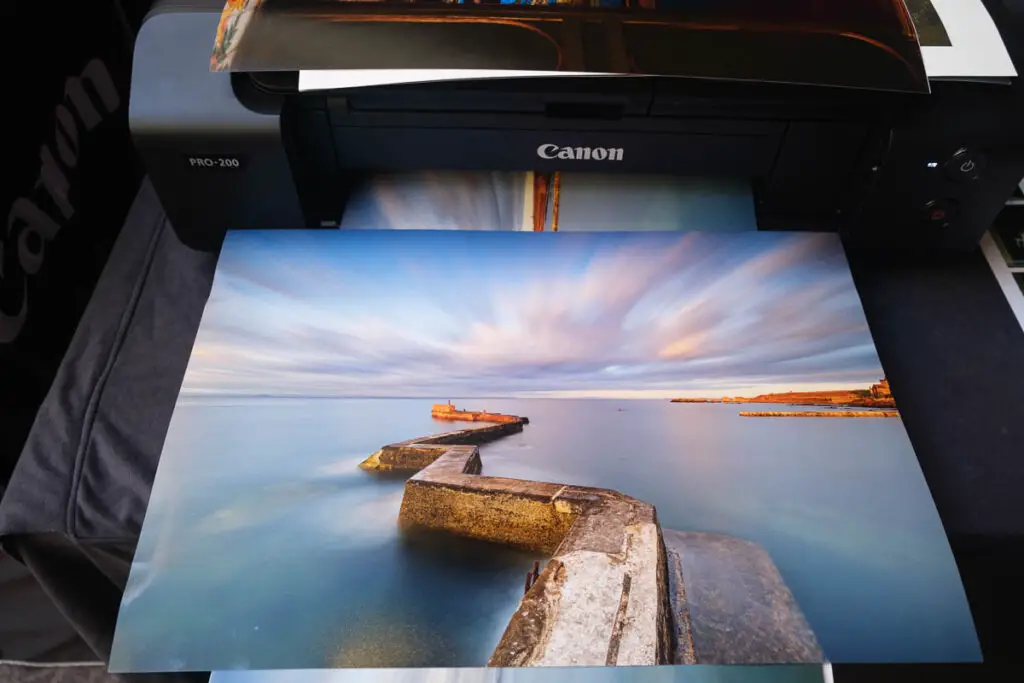
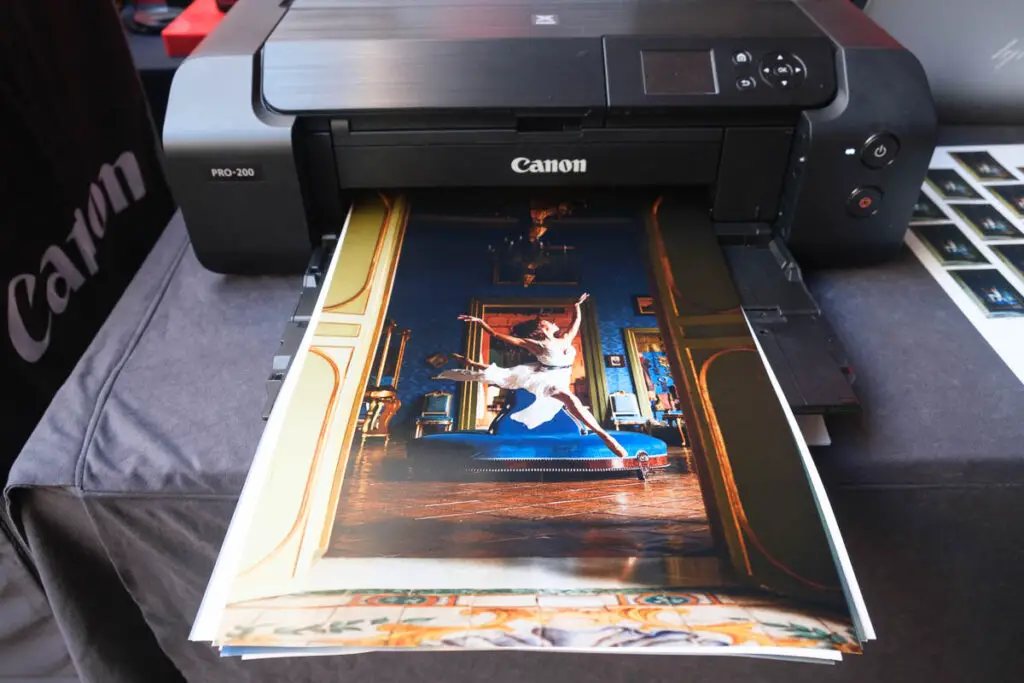
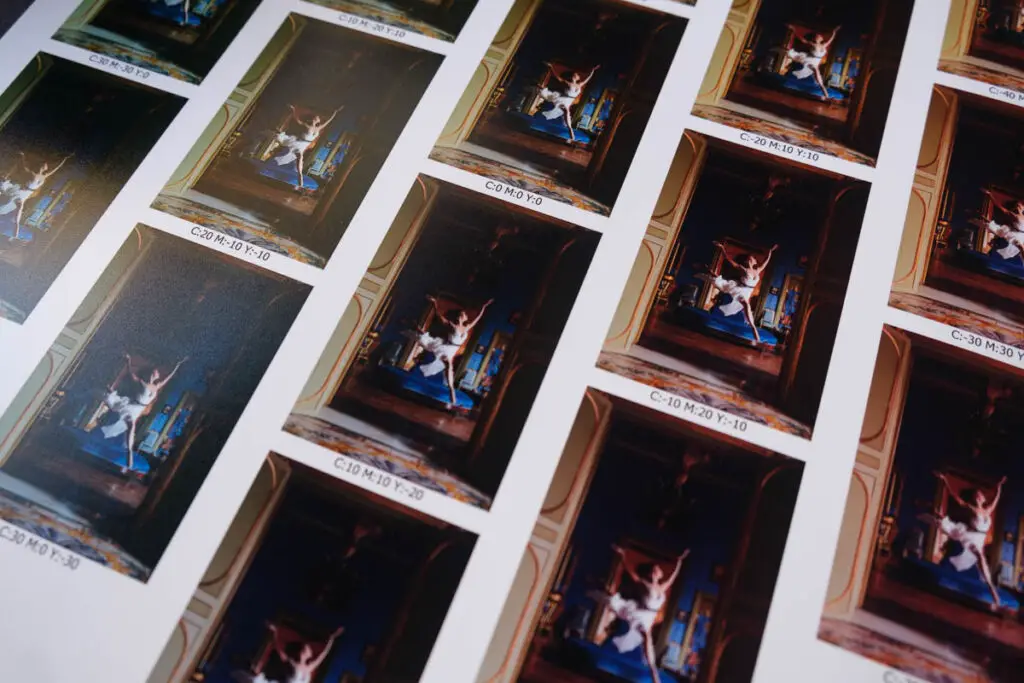
Note that you see much more significant differences in performance according to the paper type you use. The below print was made on glossy and matte paper, both from the Canon Pro 200 to show the importance of paper type.



Canon Pro 300 Color Print Examples:
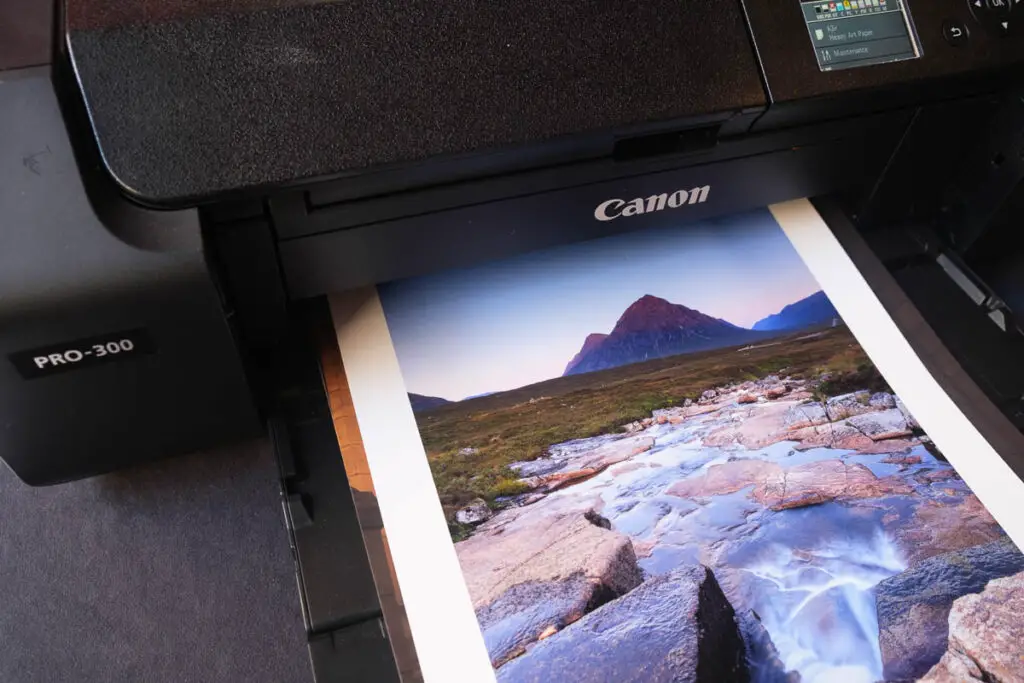


If you’re printing on matte papers, then the Canon Pro 300 can potentially deliver a more vibrant image thanks to the chroma optimizer, but glossy printing on the Canon Pro 200 always delivers the most vibrant results.
Black and White Print Quality
Black and white printing is a different story, with black and white prints coming out much stronger on the Canon Pro 300, thanks to the two black inks: matte and photo.
The Canon Pro 200 does still produce very good black and white prints, but the dye inks tend to give a slight color cast under different lighting conditions which is difficult to show in a photo, while the pigment inks on the Pro 300 do not.
You should also note that the dye inks of the Pro 200 also show this slight color cast in color images, but because they are vibrant, it’s not as noticeable as on black and white images.
Canon Pro 300 Black and White Prints:


Dye vs Pigment Inks
Pigment inks have been so well marketed that many, if not most, people would prefer them over dye inks in pretty much all cases, but there is actually not much difference between them on today’s printers.
Gloss Differential
The major difference between the dye and pigment inks of the Canon Pro 200 and 300 comes down to gloss differential.
This is where gloss paper catches the light, and the light’s reflection in white areas where little ink has been deposited contrasts with the lower reflectivity of more dense areas of ink surrounding it.
This additional reflectivity of the white areas can be quite distracting, and is a notable side-effect of pigment inks.

Dye inks are absorbed into the paper, so show very little, if any, gloss differential – colors remain true regardless of the angle light hits the paper.

Pigment inks do not get absorbed into the paper, instead sitting in a layer on top, and this means that when using glossy paper, pigment inks show gloss differential.
So, if you are regularly printing on glossy paper, the Canon Pro 200 is the best choice with its dye-based inks.
Print Lifespan
Even a few years ago, pigment inks were far superior to dye inks in print lifespan, but there isn’t a lot to separate them these days.
Canon’s own data shows that the ChromaLife 100 dye inks in the Canon Pro 200 last for up to 100 years (in the ideal conditions). You can probably halve this figure for average home use, but you still have prints that could outlast you.
The Lucia Pro inks in the Canon Pro 300 should last for 200 years under ideal conditions.
So, lifespan is broadly similar in practice, and shouldn’t be something you’re concerned about unless you are selling very high-end prints where collectors demand archival lifespans.
The Pro-300’s Chroma Optimizer
Although the Pro 300 is marketed as a ten ink printer, it only has nine color inks (including the two blacks) and a single chroma optimizer.
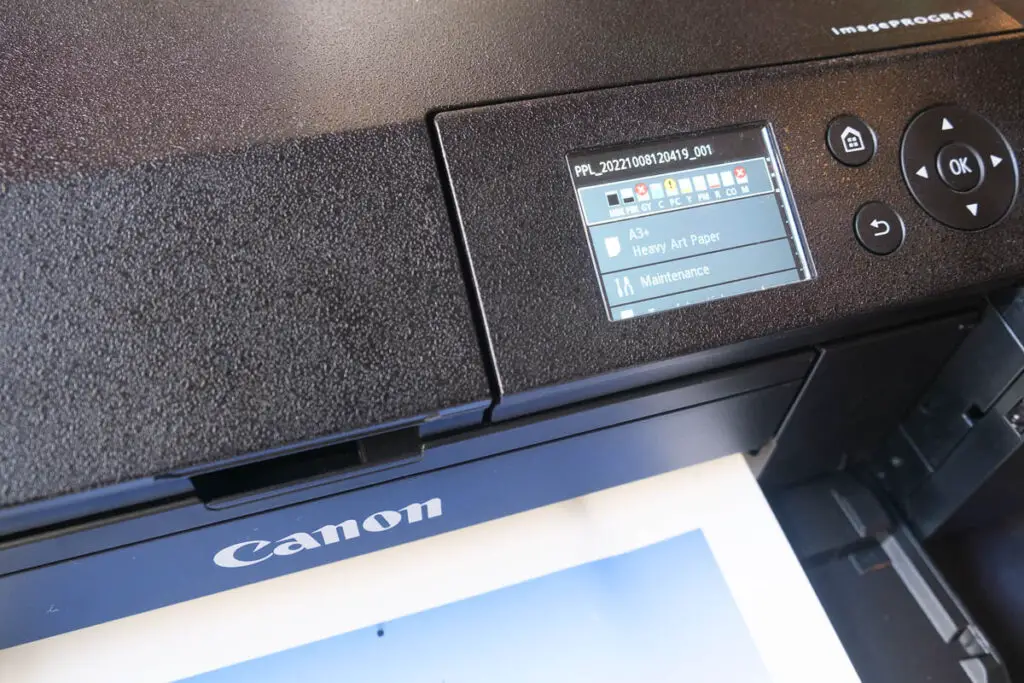
This is essentially a glossy layer that is sprayed over the print after applying the ink, which reduces bronzing of black and white prints and increases the apparent density of blacks.
You should note that this should only be used on glossy paper, as it is designed to try to help the pigment inks replicate the effects of dye inks.
It does a good job, and means that color images from the Pro 300 are very nearly a match for the Pro 200 in terms of vibrancy, and are easily good enough for gallery hanging.
Ink Life and Replacement Cost
Cost per sheet and ink life are often overlooked when you are buying a new printer, but these can make a huge difference to the value for money of each model, and should be factored into the buying price.
At launch, the Pro 300’s inks were substantially more expensive than the Pro 200’s, but this has now come down to comparable levels, with a full set of genuine Canon inks for both available for not too much over $100.
You also need to factor in that the CLI-65 inks for the Pro 200 are only 12.6ml per cartridge, while the PFI-300 inks for the Pro 300 are 14.4ml per cartridge.
If you are printing at A3 size, you can expect to get around 50 prints from both printers, although remember that ink levels will not all go down at the same rates – it will depend on the colors in the images that you print.
On average, you should expect to pay around $0.40 per 6 x 4 inch print for both printers at replacement ink cost when this article was written, so make sure to check current ink prices and adjust if the prices are more than $100 – $120.
Check Canon Pro 200’s current ink prices.
Check Canon Pro 300’s current ink prices.
Canon Pro 300 vs Pro 200: Which is Best?
The Canon PIXMA PRO-200 is ideal if you are a hobbyist who mainly wants prints for themselves, or for the occasional sale.
The Canon ImagePROGRAF Pro-300 is best for professional photographers or those who are making a large number of prints for galleries or collectors, or for those who concentrate on black and white work.
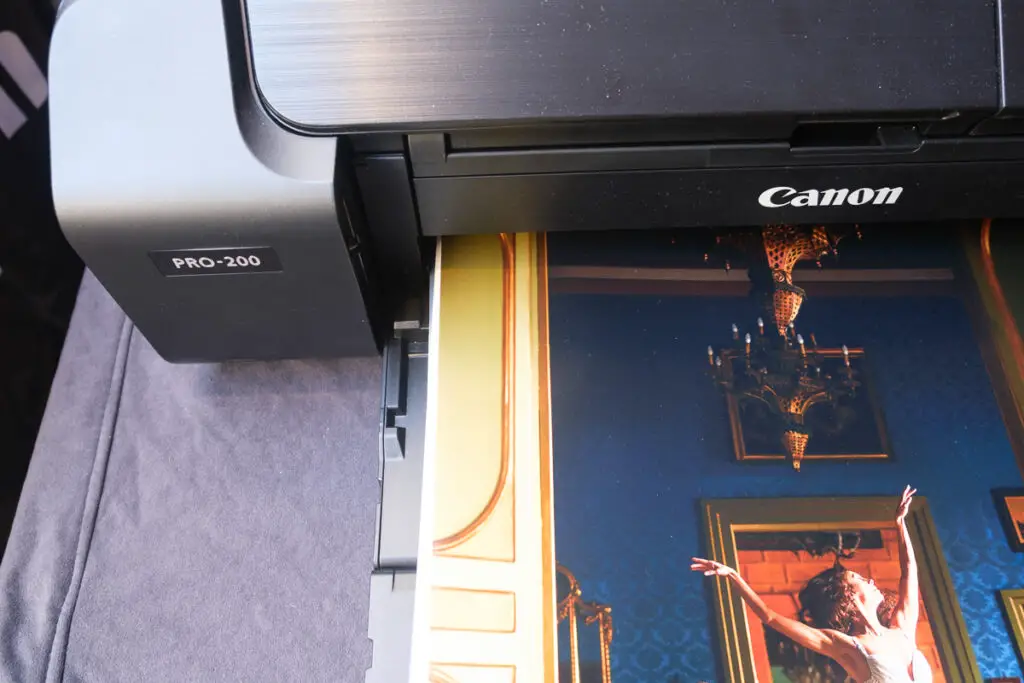
Canon PIXMA PRO-200
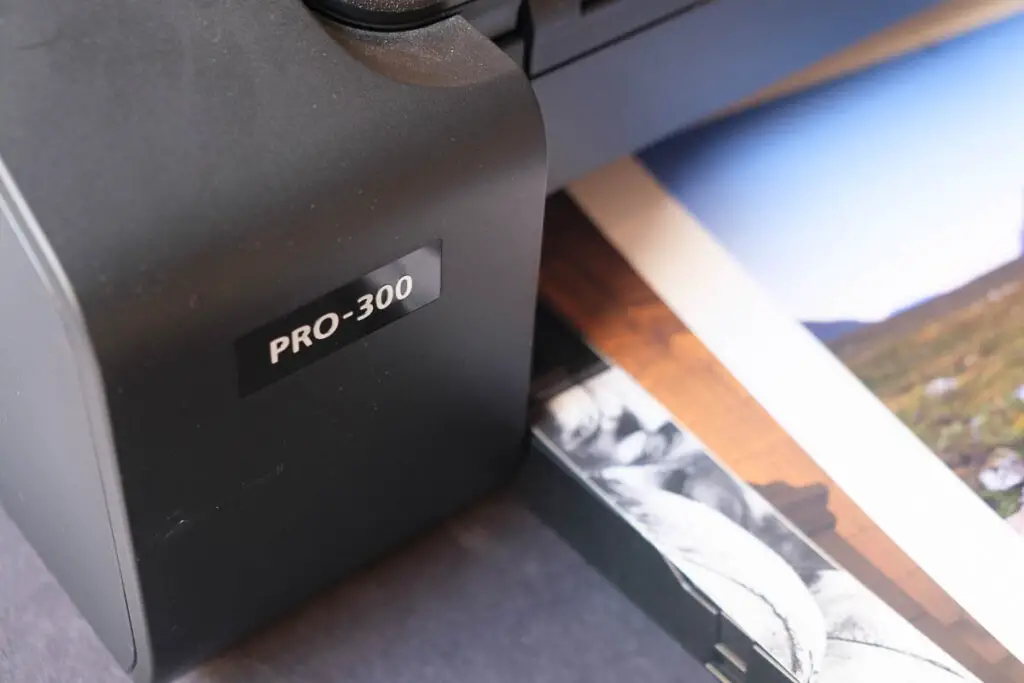
Canon ImagePROGRAF PRO-300
You can also check out this very useful review in video form below.
Read More:
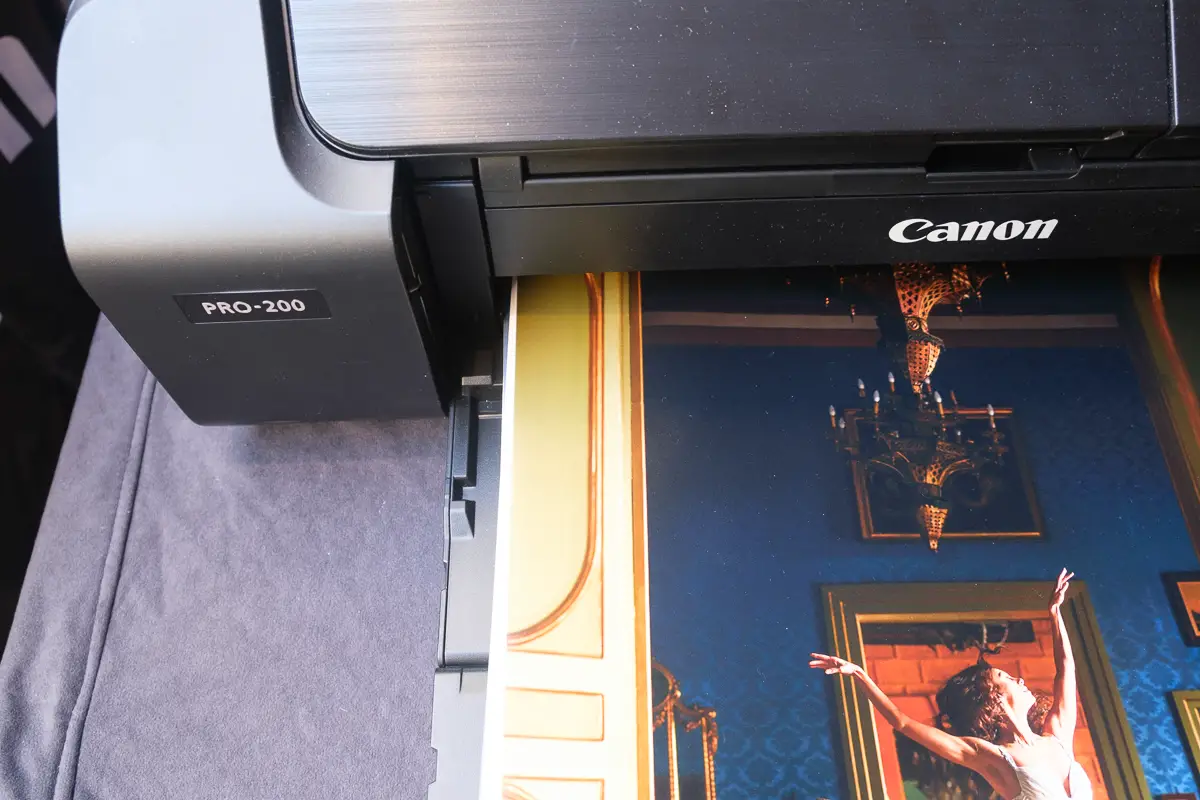
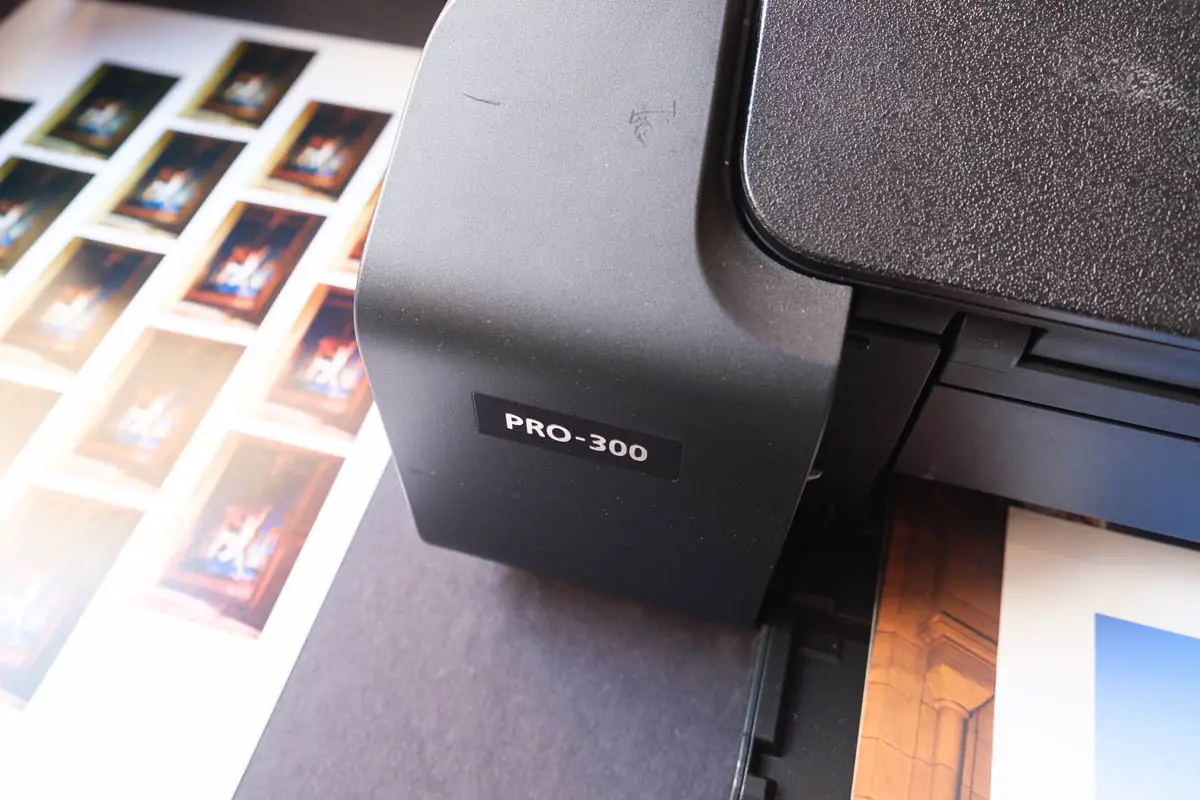
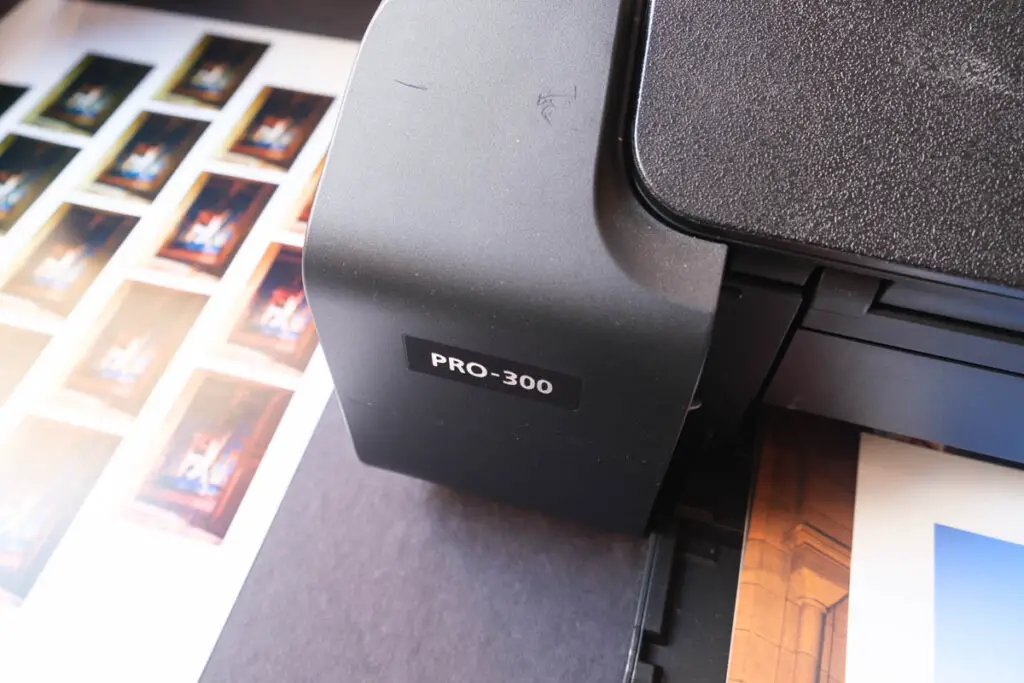




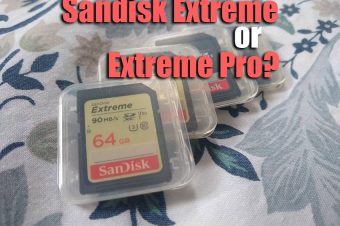

Leave a Reply